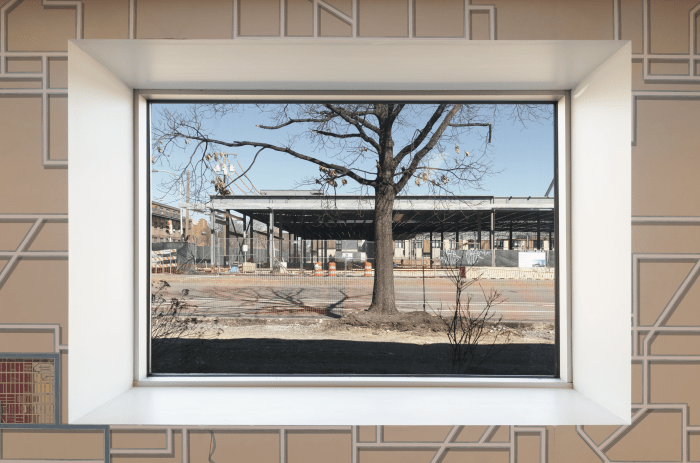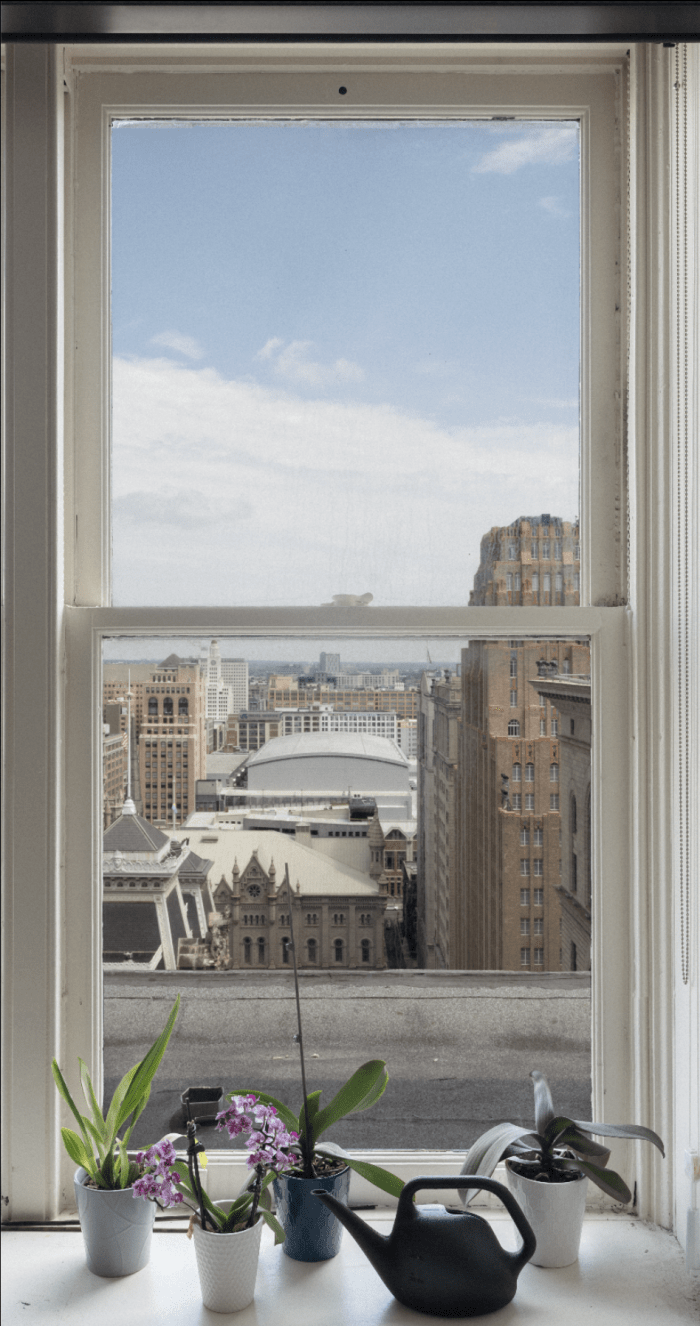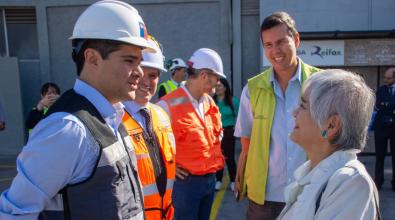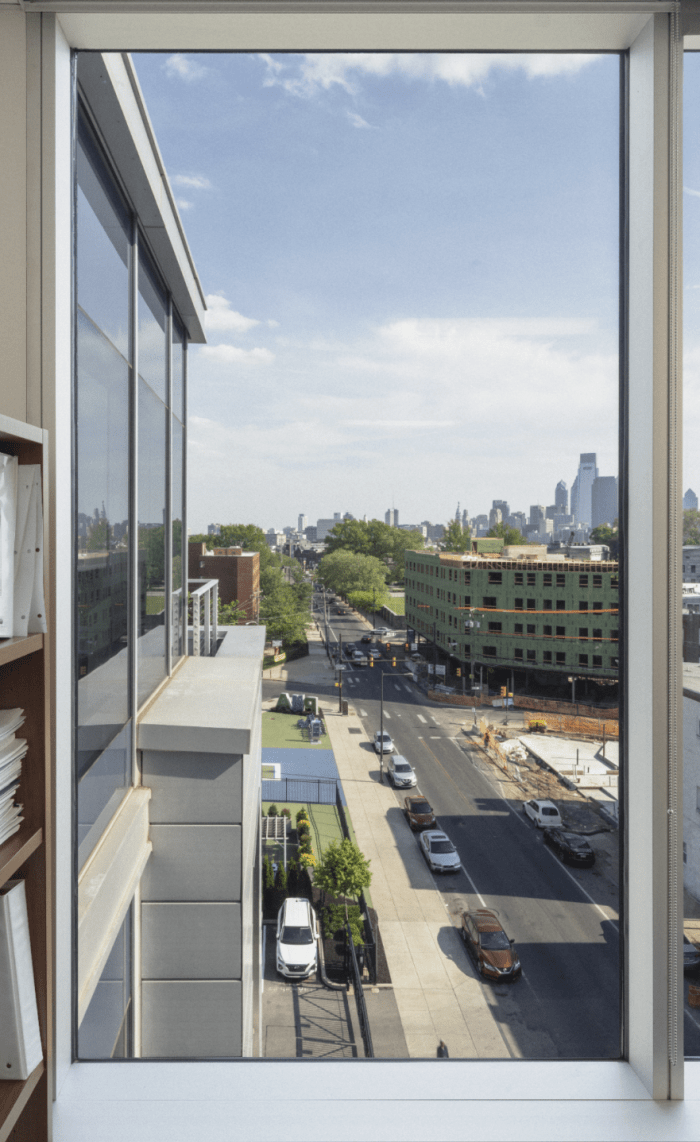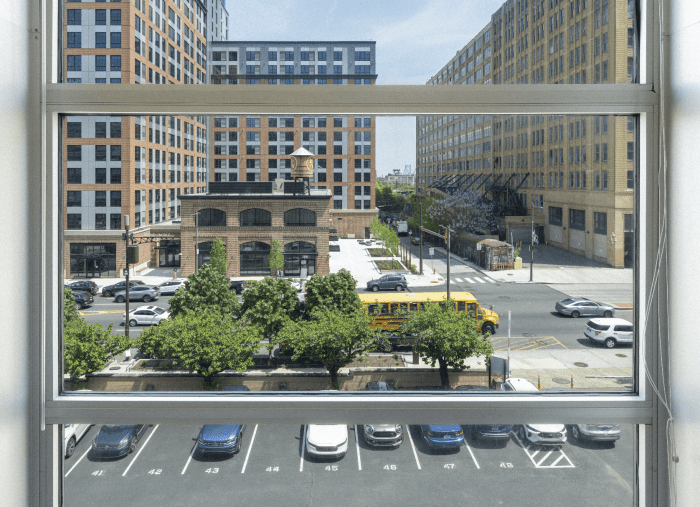 Read More
Read More
Applying a new lens on city storytelling

Listen to This Article
Anybody passing through the concourse level of Philadelphia’s Municipal Services Building to secure a business license or pay a water bill has probably noticed them: photographs of office windows looking out at skyscrapers, parking lots, thoroughfares. Each of them presents a different perspective of the city from within a civil servant’s workplace, and they are interspersed with quotes from city employees describing what it means to them to deliver for residents every day.
Capturing people’s attention is one of the first steps in successful storytelling. And, in today’s fast-paced and fragmented media space, newsletters, press releases, and Facebook posts are rarely enough for city leaders looking to connect with residents. That’s what makes this effort in Philadelphia stand out. The work of Emilio Martínez Poppe, himself a city employee in New York City, the project powerfully conveys the determination and value of the people who patrol the streets, maintain the parks, and respond to resident complaints. And, in doing so, it offers a model for how cities can be more ambitious, more experimental and, ultimately, more effective in their outreach.
By thinking outside the box, Philadelphia—whose Mayor Cherelle Parker is a participant in the Bloomberg Harvard City Leadership Initiative—is offering lessons to local leaders everywhere as they seek to build trust, improve morale, and show that their city is ready to deliver.
Humanizing civil servants to build trust.
Sharing photos or videos of city employees is nothing new. But this project, which is called Civic Views and was first displayed in the city hall courtyard before it was moved to the Municipal Services Building, adds new dimension and perspective to the practice by highlighting city workers as fellow residents rather than bureaucrats, and doing so without picturing them at all.
From firefighters describing their experience with post-traumatic stress to agency staffers explaining how they, too, are sometimes frustrated by the slow pace of change, the quotes that accompany the images make it clear that the people in local government aren’t another species. As the city’s assistant public art director, Noni Clemens, explains to Bloomberg Cities, the exhibit tells a clear story: “If the people who are helping you get your permits and putting you in touch with city services are going through the same things as you, then they’re better equipped to help you.”
Likewise, the photographs help close the gap between staff and the residents receiving services, with the views of the cityscape encouraging visitors to think of themselves in these offices and imagine what it’s like to be responsible for the city at large.
Crucially, the remarks that accompany the photographs feel genuine, not sanitized, and they don’t all paint a rosy picture of local life. One quote is from an employee who grew up with little faith in public servants. “Before working here we never cared about the government or voting or anything,” it reads. But now, the same person writes, “I see us really changing [things] for the better.”
That authenticity is true to the city’s identity and voice, according to Valerie Gay, the city’s chief cultural officer, who explains that Philadelphia residents have a long tradition of wearing their emotions on their sleeves. “Philly has a reputation of being gritty,” she says. “We’re the city that threw snowballs at Santa,” she adds, referring to an infamous 1968 Philadelphia Eagles game when fans, who were upset with the team’s dismal season, pelted St. Nick during the halftime show. This exhibit doubles down on that hometown, tell-it-as-it-is spirit, Gay says.
Boosting morale that lays the groundwork for future innovation.
If fresh approaches to city storytelling can improve public trust in government, they can also serve to bolster morale within city hall.
Another aim of the Philadelphia exhibit is to demonstrate to civil servants that they aren’t alone. By spotlighting the perspective out of fellow colleagues’ windows, it reminds staff of how many people and other departments are part of their team. And that can make local government a more inviting place to work. Martínez Poppe, who partnered with curator Jameson Paige of the group Mural Arts and engaged 21 different Philadelphia city agencies on the project, recalls one employee telling him that “she never felt so connected on a day-to-day basis to other workers and other departments.”
“And through this process, through participating in the photo shoot and interview, through seeing the work installed, through having conversations with colleagues and agencies and departments, she realized how integrated she was,” he adds.
But the exhibit is doing more for Philly staff than busting down silos. Skepticism of the value of what civil servants do every day can seep into the minds of those same employees. This project is telling a story to staff: City leaders see you, and know they need your talent and commitment to get big things done for residents.
As Gay, the chief cultural officer, explains, the project shows that she, like other leaders, “can trust the work that I get from my colleagues.”
